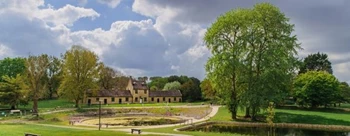The Colours of Autumn

Ask any person their favourite thing about autumn, and the majority will likely say the colours – particularly the way our leaves change into those beautiful rusty tones. But have you ever wondered how or why this happens?
First, we should consider why many trees lose their leaves in autumn and winter. In short, the colour change marks the “death” of leaves on a tree. As the seasons change, so does the amount of available daylight for our trees to use to photosynthesize. Without a maximum amount of daylight, it makes more sense for trees to save energy by going into a form of hibernation or dormancy. They also conserve energy by halting general growth and many of them will go out with a ‘bang’ by creating their seeding fruits just before the winter comes.
However, the science of the colour change goes even deeper than this. There are many theories about the “anthocyanins” which cause the colour change, including that darker leaves will absorb more warmth from the dwindling autumn sun, and that it can help protect the leaves from pests such as aphids. These compounds also trigger the tree to begin absorbing as many valuable nutrients stored in the leaves as possible before the leaves are sealed and drop off. This also ensures that moisture is kept in the tree itself and any chemicals or toxins that are unwanted are trapped in the leaves prior to dropping.
The whole process is coordinated by the length and temperature of the days and nights, so in any single year we couldn’t predict the exact date that the trees will begin to change. Warmer and sunnier days equal more food and sugars produced by the trees through photosynthesis. As soon as this productivity starts to reduce, the tree will begin releasing anthocyanins and preparing for winter.
Some tree species are arguably more spectacular in their autumn displays than others. Why not try and find a gorgeous maple or ash tree, or even search for the unmistakable pink berries of the European spindle. Of course, not all trees go through this process - evergreen trees survive the winter with completely different tactics.
While you enjoy a crisp walk through the park this year, leaves amber in the sun and crunching under your feet, you may now feel even more in touch with nature by knowing exactly what is happening inside the trees!
Find new parks to explore this autumn here.










